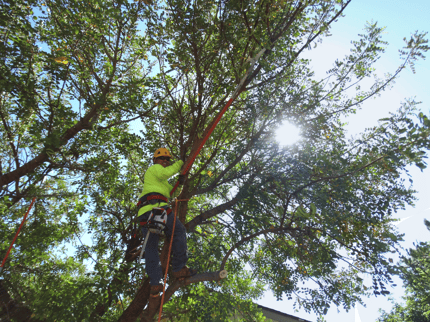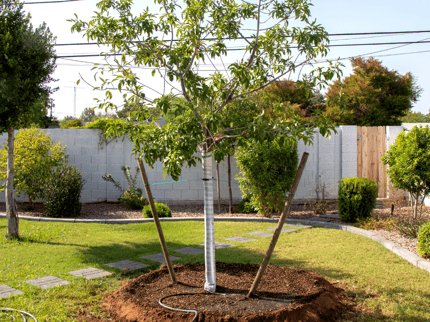The summer monsoon season in Arizona is always a double-edged sword. On one hand, this season provides our state with much-needed water and temperature relief, but on the other hand, the monsoon’s quick pace, powerful lightning, and strong winds can leave a wake of destruction in its path.
 MONSOON PREPARATION
MONSOON PREPARATION
Over the past years, we have been hit with a handful of powerful storms that uprooted trees and devastated landscapes. Witnessing this destruction is always difficult in light of the time, energy, and finances we as homeowners invest in our landscapes.
If you have been lucky during past monsoon storms, and your landscape has emerged unscathed, there is no telling what could happen this upcoming season. Our Tree Service pros put together the best tips on prepping your yard for monsoon season to ensure your landscape has the best chances of avoiding weather-induced damage.
- Water, mulch, and fertilize your trees regularly and properly. Strong and healthy trees can handle adverse weather conditions much better than malnourished ones.
- Be sure to prune your trees annually. Having your trees pruned by professionals who understand healthy tree structure is your best bet to avoid wind damage problems. Be careful when pruning, however, as exposed bark can be susceptible to sunburn.
- Clean your landscape of any plant debris or landscape trash, such as leaves, seedpods, fallen flowers, and broken stems and twigs. Not only does this help cut down on the amount of cleanup following a storm, but it also helps prevent pool filters from becoming clogged up.
- Remove all dead wood on your tree. This includes cracked branches, dried limbs, and browning palm fronds that are resting below the crown. These are brittle and cannot bend or give under pressure like living tree branches. This will also help create airflow in your tree canopies allowing wind to pass through instead of putting pressure on the tree.
- Cracks in tree branches and limbs are clear indicators of potential branch failure and will split sooner rather than later. Be proactive in pruning to prevent future cracking and possible landscape or property damage.
 STAKING TREES
STAKING TREES
Staking young trees provides them with the support they need until the trunk is strong enough to hold their canopy upright. Make sure you keep stakes on your young trees for at least one growing season.
If you feel like your trees might need more protection, our nursery pros can help you find the right materials you need and show you how to properly stake your trees. Feel free to call or visit your local Moon Valley Nurseries, and our nursery pros will help you out!
You can also watch this video for more instructions!
- Staking provides a young tree with the support it needs until the trunk is strong enough to hold its canopy upright. Most trees will not need the support of stakes for longer than a year, but the stakes should be used for at least one growing season. As soon as the tree can stand on its own, remove the stakes.
- Use 8-foot stakes or lodge poles (available at Moon Valley Nurseries). These stakes should be at least 6-8 feet tall and three inches in diameter to provide optimal support.
- Determine the direction of the prevailing wind and insert the stakes exactly opposite one another, about 2 feet from the trunk, in line with the wind. For example: if the wind direction is westerly, then place the stakes North & South.
- Drive the stakes vertically at least 2 feet into the ground. Try to bury the stakes so that both emerge the same height from the ground. When finished, stakes should stand upright at about 4 feet.
- Cut two pieces of flexible wire, each measuring at least 5 feet long. Use rubber (or cut up an old garden hose) to create two 18-inch lengths. Slip these rubber sleeves over the wire and wrap the wire around the tree so that the rubber is protecting the trunk from the wire. Pull equal lengths of the wire parallel to the ground and attach to the top of the stake. Twist the wires together on the outside of the stake to make the wire nice and taut - nip off any excess with wire cutters.
Our Tree Care team is here to help with any monsoon landscape prep you may need. Staffed with ISA Certified Arborists and Certified Nursery Professionals, the Moon Valley Tree Service team guarantees the highest quality care for your trees and landscape. From fertilization and proper watering to trimming and safe removal, our experts will get your yard ready to withstand this monsoon season!


Submit a Comment